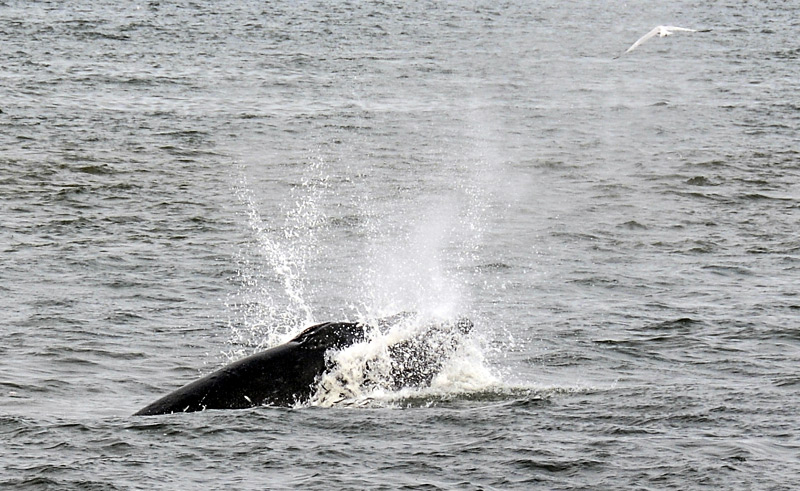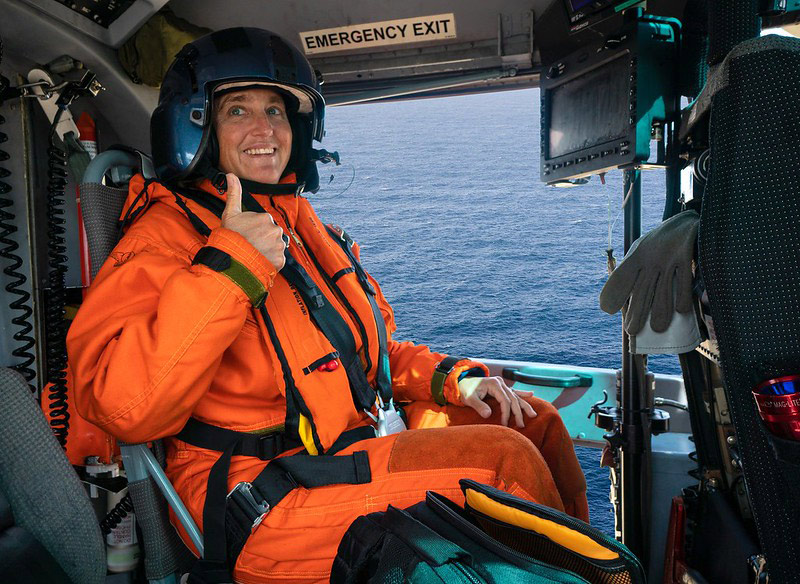Oregon Coast Scientists Discover More About Danger Areas for Whales
Published 04/05/23 at 1:15 AM
By Oregon Coast Beach Connection staff

Includes exclusive listings; some specials in winter
In Cannon Beach:
Includes rentals not listed anywhere else
In Manzanita, Wheeler, Rockaway Beach:
Some specials for winter
In Pacific City, Oceanside:
Some specials for winter
In Lincoln City:
Some specials for winter
In Depoe Bay, Gleneden Beach:
Some specials for winter
In Newport:
Look for some specials
In Waldport
Some specials for winter
In Yachats, Florence
Some specials for winter
Southern Oregon Coast Hotels / Lodgings
Reedsport to Brookings, places to stay; winter deals
(Newport, Oregon) – All along the U.S. west coast, it's a problem – and it seems to be getting worse. The number of whales getting entangled in fishing gear along the Oregon coast or Washington coast tripled in the latter half of a 16-year period, leaving them vulnerable to predation, drowning or even a decrease in population. (Photo above Seaside Aquarium, showing a humpback whale around Astoria waters)
Why and how has been under scrutiny in recent years, and a study published last month by scientists based on the Oregon coast revealed the hotspots for danger for the whales, looking at various kinds of whale population data and fishery data starting around 2011.
According to National Oceanic and Atmospheric Administration (NOAA), from 2013 through 2021, the numbers of whales getting caught in commercial fishing nets or other gear averaged about 35 per year. That number was more than three times the rate from the previous eight-year period. Even so, scientists believe that's only what has been reported: this likely represents just a fraction of the actual statistics.

Seaside Aquarium
The study was done by scientists from Oregon Department of Fish and Wildlife (ODFW) and Oregon State University, including its Marine Mammal Institute.
When a whale becomes snagged in fishing or crabbing gear, it can keep it from reaching the surface for air, thus killing the whale. Such gear also injures them in ways that can last a lifetime: it can inhibit their ability to travel, to eat, reproduce – and even affect populations.
What they found was certain areas off the Oregon coast posed more risk than others for whales, and this also depended on a variety of ocean conditions, which were often dictated by weather elements such as heatwaves.

Above courtesy OSU: co-author and Oregon whale expert Leigh Torres surveying whales by air
OSU said the whales' saw more of a risk in nearshore waters that were less than 240 feet deep, especially those off of Garibaldi, Astoria, north of Newport, north of Charleston, just north of Port Orford and at the southern edge of the Oregon coast / California border.
The exposure to dangers was higher in April as whales came closer to shore because of the upwellings (cooler water coming up from the deep which brings lots of nutrients and feeds things like krill).
However, exposure to entanglement dropped during large heatwave events, which kept the whales farther offshore. This danger increased once again after such heatwaves, said researchers, as these conditions created more upwelling events.
Entanglement happened more often with the Dungeness crab fleet, and thus the study largely concentrated on stats from that industry. In 2020, new rules were implemented for the crab industry to help cut down on instances of whales getting caught in crabbing pot gear, much of them coming from this research. Oregon coast officials will reexamine their effectiveness this year.
Hatfield Marine Science Center's associate professor Leigh Torres was also a co-author of the new paper.The study looked at blue whales and humpbacks.
Oregon Coast Hotels in this area - South Coast Hotels - Where to eat - Maps - Virtual Tours
Cannon Beach Lodging
Nehalem Bay Lodgings
Manzanita Hotels, Lodging
Three Capes Lodging
Pacific City Hotels, Lodging
Lincoln City Lodging
Depoe Bay Lodging
Newport Lodging
Waldport Lodging
Yachats Lodging
Oregon Coast Vacation Rentals
Oregon Coast Lodging Specials
All photos below courtesy Seaside Aquarium



More About Oregon Coast hotels, lodging.....
More About Oregon Coast Restaurants, Dining.....
 Andre' GW Hagestedt is editor, owner and primary photographer / videographer of Oregon Coast Beach Connection, an online publication that sees over 1 million pageviews per month. He is also author of several books about the coast.
Andre' GW Hagestedt is editor, owner and primary photographer / videographer of Oregon Coast Beach Connection, an online publication that sees over 1 million pageviews per month. He is also author of several books about the coast.
LATEST Related Oregon Coast Articles
All five were rescued and are okay
Be Jeweled Returns to Central Oregon Coast, Newport's Dazzling, Arty Jewelry ...
Saturday, May 10, from 10 AM to 4 PM featuring more than 2,000 pieces. Newport events
Famed Washed Ashore Project Will Be New Exhibit at Newport's Oregon Coast Aqu...
The unique exhibit of animals made from debris begins in May. Newport events, Lincoln City events
Search for Missing Teen Called Off After Involving Coast Guard from Washingto...
Two companions that tried to help also needed rescue at Long Beach. Beach safety, sciences
Getting Oregon Coast Stays on the 'Lowdown' - Where Lincoln City Cut Rates
Excellent Lincoln City specials abound. Lincoln City hotel reviews
Ready for Cuteness Overload? Astoria Fire Rescues Ducklings from N. Oregon Co...
A tour bus driver witnessed seven baby ducks fall into a sewer drain. Marine sciences
Oregon Astronomer: Why Easter Moves Around, April's Meteor Showers
Lyrid meteors, smallest moon of the year, and what's up with Easter. Sciences. south coast events, Florence events, Astoria events, Seaside events, Cannon Beach events, Manzanita events, Rockaway Beach events, Tillamook events, Garibaldi events, Oceanside events, Pacific City events, Lincoln City events, Depoe Bay events, Newport events, Waldport events, Newport events, Yachats events
South Oregon Coast Events Bring Two Ways to Take a Wild Ride in Bandon, Coos Bay
UTV Takeover June 24 - 29 near Coos Bay, July 4 Cardboard Boat Regatta in Bandon. S. Coast events
Back to Oregon Coast
Contact Advertise on Oregon Coast Beach Connection
All Content, unless otherwise attributed, copyright Oregon Coast Beach Connection. Unauthorized use or publication is not permitted



















































